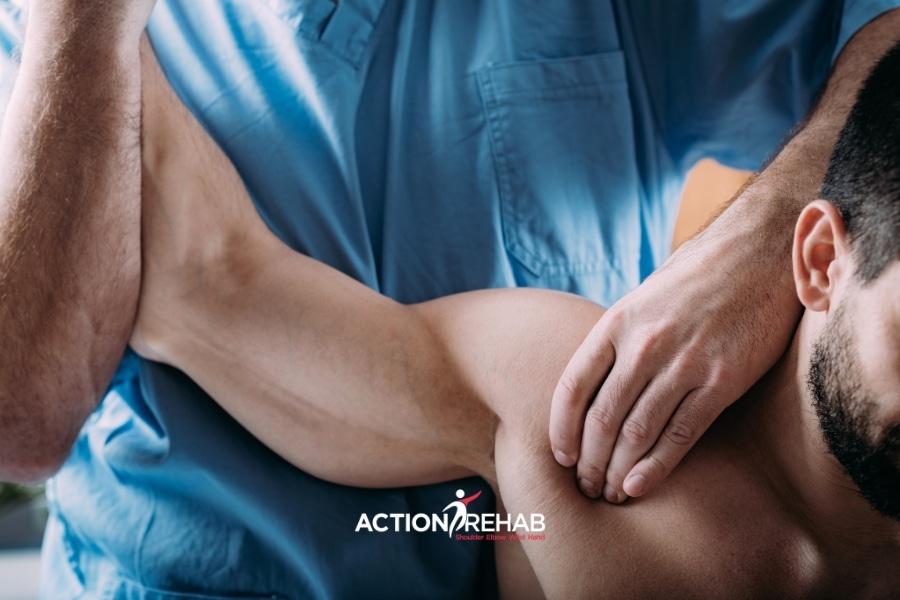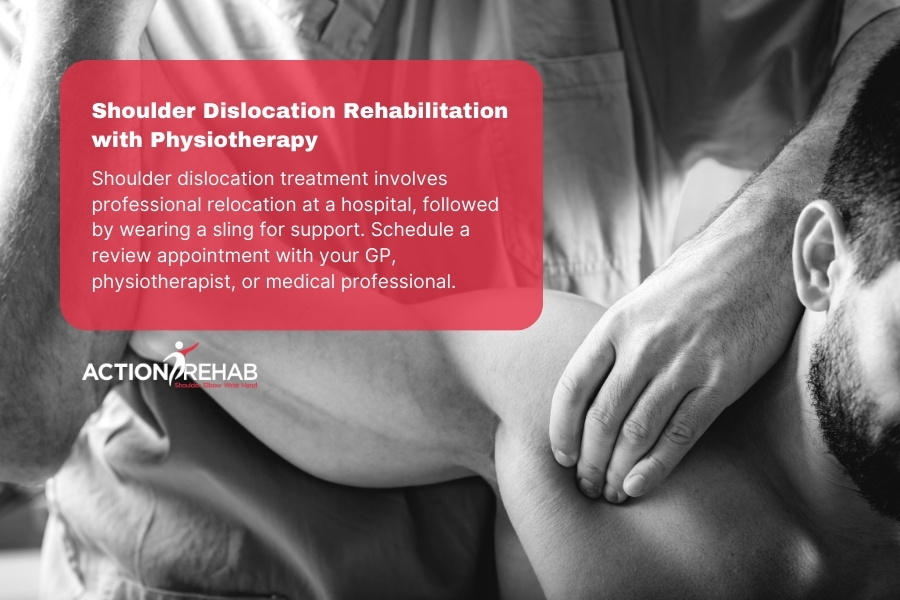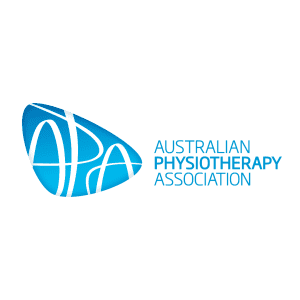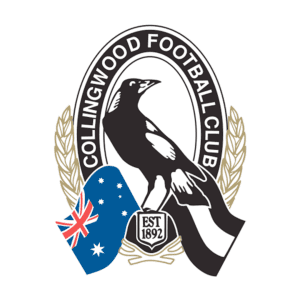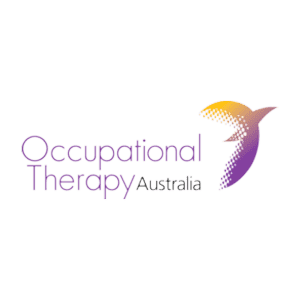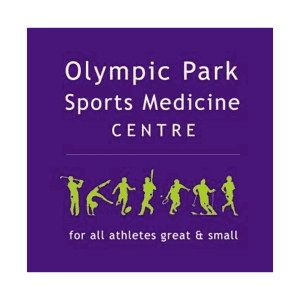What is a shoulder dislocation?
Shoulder dislocation occurs when the bone of the upper arm (humerus) pops out of the shoulder socket.
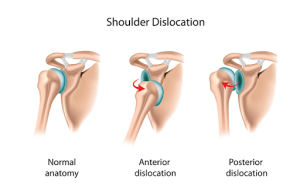 Mechanism of Injury:
Mechanism of Injury:
Shoulder dislocations occur from a high force, such as a strong blow or falling on an outstretched hand, that pull the humerus out of place. The most common type of dislocation is an anterior dislocation (97%), where the shoulder pops out anteriorly. Posterior and inferior dislocations are less common.
Prevalence:
Being the most mobile joint in the body makes the shoulder more susceptible to dislocation. They represent 50% of all joint dislocations. Overhead/contact sports increase risk of shoulder dislocations and being a male.
Symptoms of shoulder dislocation
- Popping sensation
- Sudden onset of sharp pain in the shoulder
- Pins and needles/ numbness extending down the arm
- Visible deformity
- Inability to move the shoulder joint/ arm
Complications:
There can be other complications that occur when you dislocate a shoulder, for example tears, fractures and/or nerve damage. Risk of re-injury is highest in the first 2 years from the 1st episode, and higher in younger, more active patients.
Treatment of shoulder dislocation
The first point of call is trying to reduce the shoulder back into its socket. There are multiple techniques to try to achieve this, but the safest is to go to a hospital and get a professional to perform them, as you can cause more damage trying to relocate it yourself. Once the shoulder has been relocated, it is best to be placed in a sling to support your shoulder and arm, and then book an appointment with either your GP, physiotherapist or medical professional for a review.
Acute vs Chronic Instability Management
Acute:
If this is a first-time dislocation, with no other complications, then conservative management is an option. An extensive strengthening program by your physiotherapist focusing on your upper limb, but in particular the shoulder stabilising muscles, is the main goal of therapy. Along with activity modification and a thorough rehab plan to get you back to your goals/sport.
Chronic:
If there has been a history of multiple dislocations or there are any other complications involved in the dislocation, then surgery will be the best option to help restore stability of the joint. The anterior stabilisation approach is the most commonly performed due to the high prevalence of this type of dislocation.
Post operation protocols include:
- First 6 weeks: Sling, no external rotation, range of movement only to 90deg
- Driving from 6-8 weeks
- Strengthening and heavy work from 12 weeks
- Contact sports from 9 months
To get the best possible outcome from your surgery, rehabilitation with a physiotherapist is crucial. They will help guide you through the stages of your post-op journey.
Risks of failure after stabilisation surgery include <22yo, male, participation in competitive sports, number of preop dislocations and time from first dislocation.
Comprehensive Shoulder Dislocation Care: Book Your Assessment with Action Rehab Today!
If you have suffered a shoulder dislocation and are seeking help with your management, book in and chat to our friendly specialists at Action Rehab on 1300762227. We will appropriately assess your shoulder and provide the most evidence-based treatment to assist with your injury and recovery.
References:
- Abrams R, Akbarnja H. (2022). Shoulder Dislocations Overview. In: StatPearls [Internet]. Treasure Island (FL): StatPearls Publishing
- Denard P, Dai X, et al. (2015). Increasing preoperative dislocations and total time of dislocation affect surgical management of anterior shoulder instability. International Journal of Shoulder Surgery, 9(1), 1.
- Kavaja L, Lahdeoja T, Malmivaara A, et al. (2018). Treatment after traumatic shoulder dislocation: a systematic review with a network meta-analysis. British Journal of Sports Medicine.
- Nixon et al. (2014). High recurrence of instability in adolescents playing contact sports after arthroscopic shoulder stabilization. Journal of Pediatric Orthopaedics
- Olds MK, Ellis R, Parmat P, et al. (2019). Who will dislocate his/her shoulder? Predicting recurrent instability following a first time traumatic anterior shoulder dislocation, BMJ Open Sport & Exercise Medicine
- Padmasekara, G. (2021). Rehabilitation Protocol following Arthroscopic Stabilisation (Anterior). South Eastern Orthopaedic Specialists. Retrieved from https://seorthopaedics.com.au/rehabilitation


